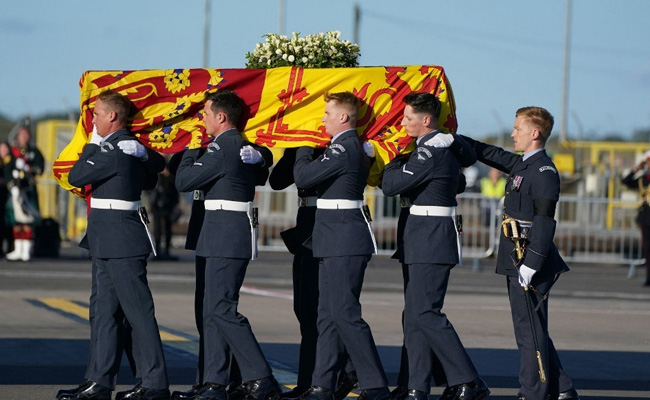What is the history of funeral in Britain's royal family.
(file photo)
London:
Britain's great royal events have often been a combination of new and old, so this time Queen Elizabeth II's funeral will also be no exception.
There will be a surprising number of new features this time around, but it seems the traditional elements may not be as old as they might appear.
Some new elements are a repetition of the past.
Philip Williamson, Professor of Modern British History at Durham University, explains the funeral procession in the British royal family.
The public mourning for Elizabeth II is a huge national event.
The condolence program began with his death on September 8 and will end after his funeral on September 19.
initial funeral
Since the 18th century all British rulers are buried in Windsor.
For a long period, funeral ceremonies took place within Windsor Palace, but changes began in 1901 with the death of Queen Victoria, after 63 years of reign, to make the monarchy more public.
This was done to encourage greater popularity towards the royal family, as society was becoming more democratic.
The day of Queen Victoria's funeral has been declared a day of national mourning and all work will be closed on this day. Queen Victoria died at her home in the Isle of Wight.
This was followed by a long and slow procession across London, which drew huge crowds as his coffin was carried to Windsor.
Even after the death of later rulers, public processions remained an important part of their funerals.
A Public Matter Following the death of Victoria's heirs, further measures were taken to involve the public at funerals.
When Edward VII died in London in 1910, the state began to place his coffin publicly at Westminster Hall.
His son, George V, insisted that access be "democratic" and 300,000 people paid tribute by joining the procession behind the coffin.
In the year 1936, the mourning day at the funeral of George V was converted into a two-minute national silence due to the economic decline. Two new things were added to the ritual.
A special remembrance service was held at St Paul's Cathedral in Windsor to mark the funeral of King George VI, attended by members of the government, parliament and other national leaders.
Remembrance services and funeral processions were broadcast on television and radio in London.
For the first time, the royal funeral was broadcast in this way.
Queen Elizabeth II's funeral Since 1901, many aspects of the royal funeral have been an integral part of the 2022 arrangements, but there are also some new elements.
Some of these features are the result of advances in television and electronic media.
In addition, some features have to do with the fact that Queen Elizabeth is being paid tribute for a longer reign than Queen Victoria.
There will now be a minute's silence on Sunday evening before the Queen's funeral, as well as a two-minute silence on the day of the funeral.
With the resumption of the practice of celebrating National Mourning Day, public participation will also increase.
With this, while a large number of spectators will be able to watch the funeral ceremony on television, people will gather in large numbers in the procession route to be taken out in London.
read this also :
Video: President Murmu arrives in London to attend the funeral of Queen Elizabeth II
Kerala auto driver got a lottery of 25 crores, said- I will build a house first
Ground Report: Why is there a ruckus in Chandigarh University?
(This news has not been edited by NDTV team. It has been published directly from Syndicate feed.)
)